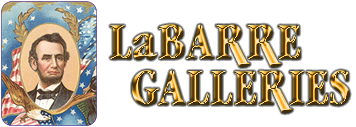Savannah and Charleston Rail Road Co. - 1869 dated $500 Railway Bond
Inv# RB7542 BondSouth Carolina
$500 7% Bond printed by Walker, Evans & Cogswell, Charleston, S.C. Blue 50 cents Washington Revenue stamp! 32 coupons remain at bottom of bond. Wear and tear at folds. Very Rare!
The Charleston and Savannah Railway was a 19th-century American railroad serving the coastal states of South Carolina and Georgia, passing through the Lowcountry region of South Carolina. Its name changed slightly over time: Charleston and Savannah Railway (1854–1866), Savannah and Charleston Railway (1866–1880), and Charleston and Savannah Railway (1880–1901). This system was first established in 1854 as the Charleston and Savannah Railway. The C&S RR established and operated a 120-mile (190 km) rail line with a gauge of 5 feet (1,524 mm) from Charleston, South Carolina, to Savannah, Georgia, connecting two of the most significant port cities in the southeastern United States before the war. South Carolina state senator Thomas Drayton served as the president of the railroad from its early planning stages in 1853 until 1856. During the Civil War, control of the railroad was crucial for the defense of Savannah and ensuring that nearby Confederate soldiers received food and supplies. In December 1864, during his March to the Sea, Major General William T. Sherman sent part of his Union forces ahead to cut the railroad, which would force Confederate General William Hardee to retreat and abandon Savannah. The effort failed, but parts of the railroad were severely damaged during Sherman's Carolinas Campaign in 1865.
After the war, the railroad underwent reorganization in 1866, becoming the Savannah and Charleston Railroad. However, it did not finish repairs and reopen for traffic as a standard gauge line of 4 ft 8 + 1?2 in (1,435 mm) until 1869-70. In 1873, it defaulted on a loan, leading to bankruptcy. Subsequently, it was sold to Henry B. Plant in June of the 1880s, and the railroad was renamed the Charleston and Savannah Railway, integrating into the Plant System of railroads. In 1877, the Ashley River Railroad, another entity within the Plant System, was constructed. This railroad connected to the Charleston and Savannah Railway at Johns Island and traversed the Ashley River to link with the Northeastern Railroad in North Charleston. Previously, the Charleston and Savannah Railway had connected to other railroads via a ferry across the river. During the 1880s, the Plant System established the Yonges Island Branch, which diverged from the main line at Ravenel. This now-defunct branch extended through Hollywood and Meggett. Eventually, in 1902, the Plant System was sold to the Atlantic Coast Line Railroad.
The Charleston and Savannah Railway, along with the Ashley River Railroad, would eventually integrate into the main line of the Atlantic Coast Line, which spanned from Richmond, Virginia, to Tampa, Florida. Additionally, the track from Hardeville to Savannah was utilized by the Southern Railway to link a section of track from Columbia to Hardeville with Florida. The original line situated to the east of Johns Island was designated as the Croghans Branch following the commencement of service by the Ashley River Railroad. This Croghans Branch has since been decommissioned, and its former right of way is now designated as the West Ashley Greenway. In 1967, the Atlantic Coast Line underwent a merger with its competitor, the Seaboard Air Line Railroad, resulting in the formation of the Seaboard Coast Line Railroad. Subsequently, in 1980, the parent company of the Seaboard Coast Line merged with the Chessie System, leading to the establishment of the CSX Corporation. Initially, the CSX Corporation managed the Chessie and Seaboard Systems as separate entities until 1986, when they were consolidated into CSX Transportation. Currently, the line remains operational from Johns Island to Savannah and is incorporated into CSX's A Line, specifically the Charleston Subdivision.
A bond is a document of title for a loan. Bonds are issued, not only by businesses, but also by national, state or city governments, or other public bodies, or sometimes by individuals. Bonds are a loan to the company or other body. They are normally repayable within a stated period of time. Bonds earn interest at a fixed rate, which must usually be paid by the undertaking regardless of its financial results. A bondholder is a creditor of the undertaking.











Ebay ID: labarre_galleries